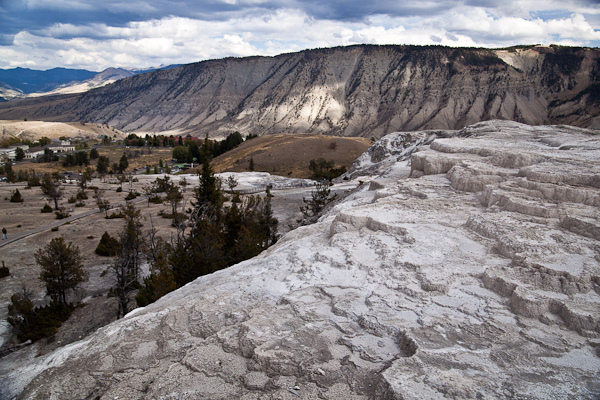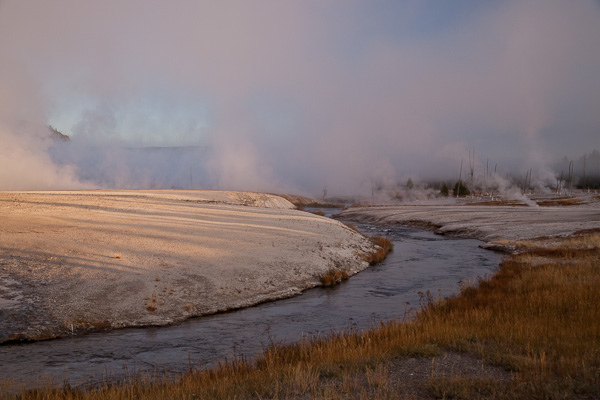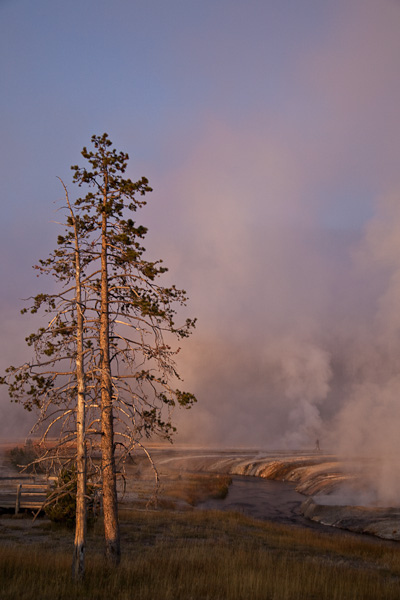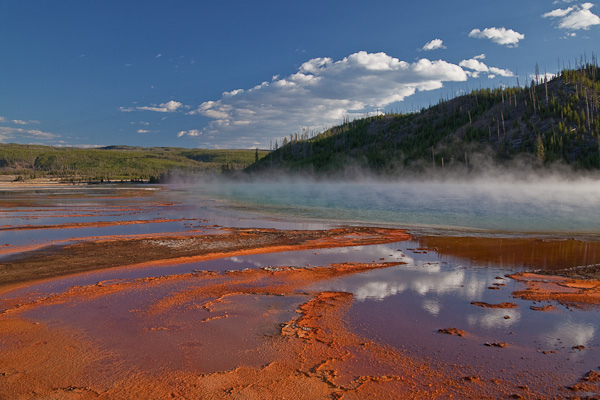The Mammoth Hot Spring Terraces in the northwestern corner of Yellowstone National Park are easy to drive by. They look like large terraced white rock. Nothing spurting hot water, no geyser countdowns, no bubbling pools. You only get the rewards when you walk up and down the many planked steps and boardwalks. Then the beauty of the hot springs, often a rugged beauty, can be seen.
The terraces are formed when hot water carries dissolved calcium and bicarbonate to the surface of the terraces. The carbonate and calcium combine to form a hard rock known as travertine. The abopve photo features a large terrace of travertine — bright white steps which turn a greyish color as they weather. In other areas of the terraced hot springs, water is running and it changes the colors of the white-gray rock.
Not all areas of the terrace have water flows. When we were there a week ago, there were only two areas that had pools. Most of the hot springs were the whitish-gay dry travertine.











